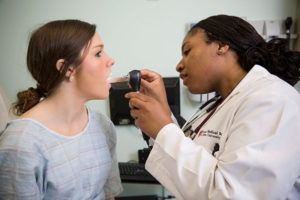Tag
preventive services
-
Latest update to federal preventive services site benefits users
The United States Preventive Services Task Force (USPSTF) has made changes to the way they present their recommendations in hopes…

-
Report suggests applying value-based insurance design to high-deductible health plans
For years, health policy experts have asked whether high-deductible health plans (HDHPs) with health savings accounts (HSAs) cause some patients…

-
•
Task force makes recommendations on cognitive screenings
The U.S. Preventive Services Task Force issued recommendations on Tuesday on the value of routine cognitive screening for older adults,…

-
Cover the science behind screenings, preventive health recommendations
The U.S. Preventive Services Task Force often finds itself in the news when determining what works and doesn’t work in screenings and…

-
Breast cancer screening recommendations up for review
With mammograms in the news lately, it’s worth noting that the U.S. Preventive Services Task Force has posted its plan…

-
Patients paying for confusion over prevention vs. treatment under ACA
Under the Affordable Care Act, certain high-value preventive services – such as colonoscopies – are supposed to be free. No co-pay…



